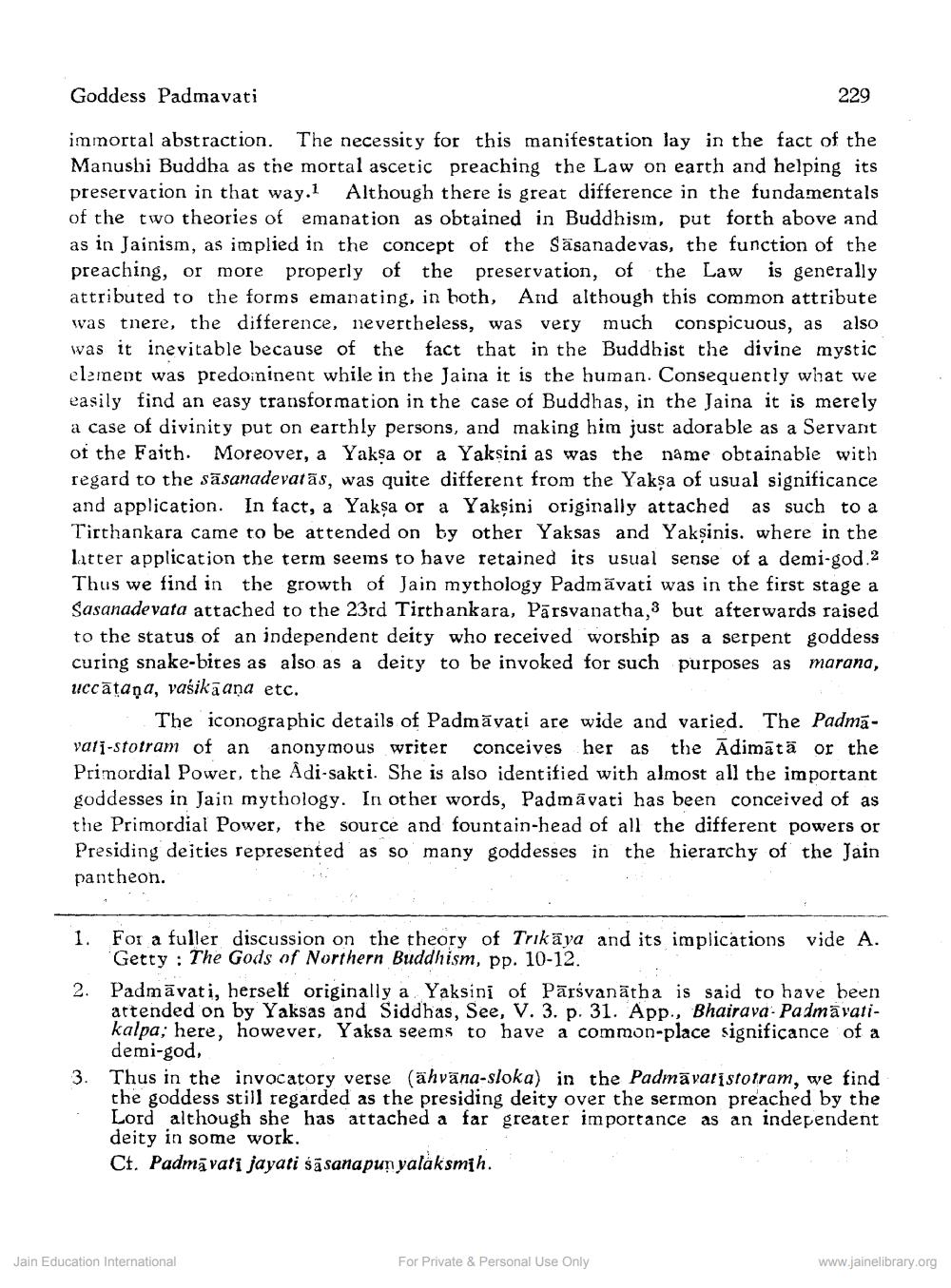________________
Goddess Padmavati
229
immortal abstraction. The necessity for this manifestation lay in the fact of the Manushi Buddha as the mortal ascetic preaching the Law on earth and helping its preservation in that way. Although there is great difference in the fundamentals of the two theories of emanation as obtained in Buddhism, put forth above and as in Jainism, as implied in the concept of the Säsanadevas, the function of the preaching, or more properly of the preservation, of the Law is generally attributed to the forms emanating, in both, And although this common attribute was tnere, the difference, nevertheless, was very much conspicuous, as also was it inevitable because of the fact that in the Buddhist the divine mystic element was predoininent while in the Jaina it is the human. Consequently what we easily find an easy transformation in the case of Buddhas, in the Jaina it is merely a case of divinity put on earthly persons, and making him just adorable as a Servant of the Faith. Moreover, a Yaksa or a Yaksini as was the name obtainable with regard to the sāsanadevatās, was quite different from the Yakṣa of usual significance and application. In fact, a Yakṣa or a Yakşini originally attached as such to a Tirthankara came to be attended on by other Yaksas and Yaksinis. where in the latter application the term seems to have retained its usual sense of a demi-god. 2 Thus we find in the growth of Jain mythology Padmavati was in the first stage a Sasanadevata attached to the 23rd Tirthankara, Pārsvanatha, 3 but afterwards raised to the status of an independent deity who received worship as a serpent goddess curing snake bites as also as a deity to be invoked for such purposes as marana, uccātaņa, vasika ana etc.
The iconographic details of Padmavati are wide and varied. The Padmavati-stotram of an anonymous writer conceives her as the Adimātā or the Primordial Power, the Adi-sakti. She is also identified with almost all the important goddesses in Jain mythology. In other words, Padmavati has been conceived of as the Primordial Power, the source and fountain-head of all the different powers or Presiding deities represented as so many goddesses in the hierarchy of the Jain pantheon.
2.
P
1. For a fuller discussion on the theory of Trikāya and its implications vide A.
Getty : The Gods of Northern Buddhism, pp. 10-12. Padmāvati, herself originally a Yaksini of Pārsvanātha is said to have been attended on by Yaksas and Siddhas, See, V. 3. p. 31. App., Bhairava: Padmavatikalpa; here, however, Yaksa seems to have a common-place significance of a demi-god, Thus in the invocatory verse (ahvāna-sloka) in the Padmāvaristotram, we find the goddess still regarded as the presiding deity over the sermon preached by the Lord although she has attached a far greater importance as an independent deity in some work. Ct. Padmavati jayati śāsanapun yalaksmih.
Jain Education International
For Private & Personal Use Only
www.jainelibrary.org




